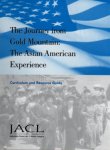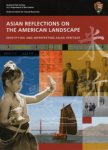Book Description from the IntroductionThe United States has always proclaimed itself as a nation of immigrants who came to this country because it symbolized the spirit of freedom. Those who came sought economic opportunity or sanctuary from religious and political oppression. These immigrants and their descendents took advantage of opportunities to establish roots, build communities, secure a livelihood and future in America, and contribute to the growth of its institutions of government, business and culture.The history of American immigration also has a darker side where anti-Catholic, anti-Mexican or anti-Asian sentiment led to barriers of discrimination toward immigrants who aspired to a better life in America. The history of Asian immigration began in the mid-1800s with the arrival of the Chinese, who were blamed for job shortages and stigmatized as foreigners incapable of assimilating into the American culture. The Japanese and Filipinos who followed were subjected to similar treatment where fear of the mythical "Yellow Peril" stirred public resentment causing their marginalization from the mainstream of society until well into the Twentieth Century. The advances forged by the Civil Rights Movement during the 1950s and 1960s moderated blatant discrimination, enabling Asian Americans to begin making strides to claim their place in America. The Asian American population increased dramatically from 1970 to 2000 due to immigration policies that removed racial barriers, placed an emphasis on family reunification and allowed for refugee resettlement following the Vietnam War. In recent years, this diverse group of Americans, comprising over twenty distinct groups, continues to confront the historical challenges of discrimination, while making significant contributions to our society. The Asian American experience is often ignored in the history curriculum. While some textbooks make mention of aspects of Asian American history, few cover this history in any detail. The purpose of this curriculum guide is to provide a comprehensive treatment of the history of Asian Americans to enrich students in their understanding about this fast-growing segment of the population. By using this curriculum guide, teachers will discover new ways to provide classroom activities that address the learning standards set forth by the National Council for the Social Studies (NCSS). The lesson plans contained in the curriculum guide were developed to align with the NCSS thematic strands of Culture; Time, Continuity and Change; Individual Development and Identity; Individuals, Groups and Institutions; Power, Authority and Governance. This guide contains a chronology of important events in history that shaped the Asian American experience. The guide also contains a section that profiles prominent Asian Americans detailing their important contributions to our society. There is a section on resources of books that will provide more insight on the Asian Americans. A final section provides a rationale for the instruction of multicultural education, the concept that recognizes the importance of cultural diversity in promoting equality and achievement for all students.
|
|
|||
|
About | Contact | New | Specials | Browsing | Ordering | Conference | Links | Help Copyright © 2009 by AACP, Inc. Most recent revision May 28, 2009 |
||||


